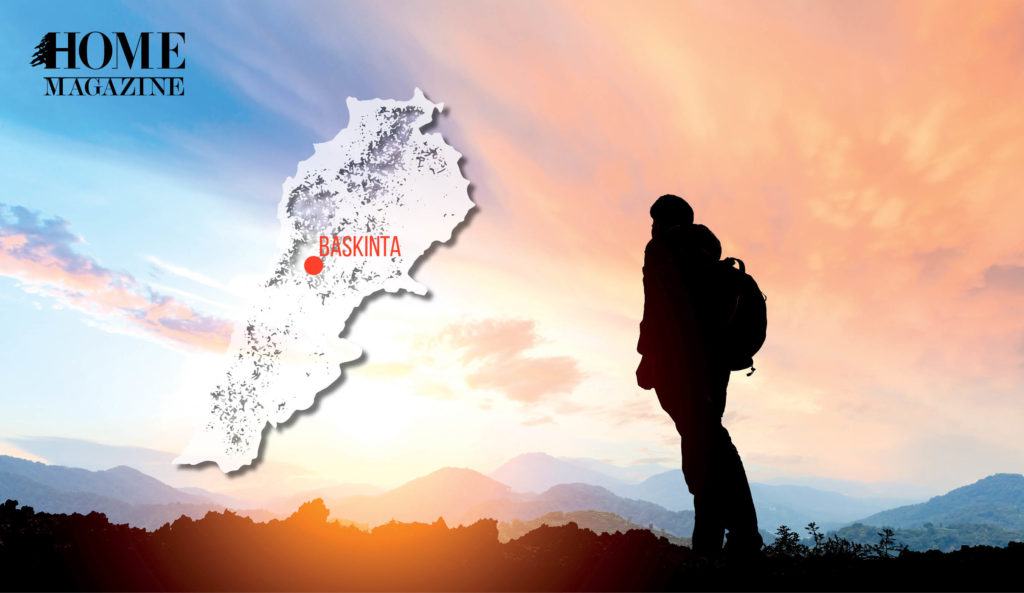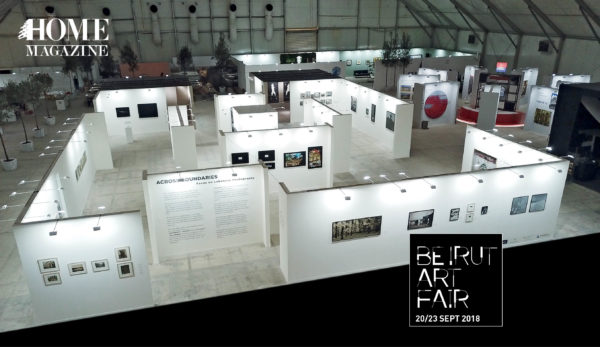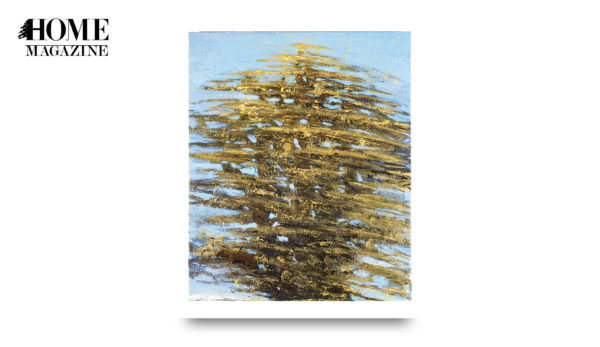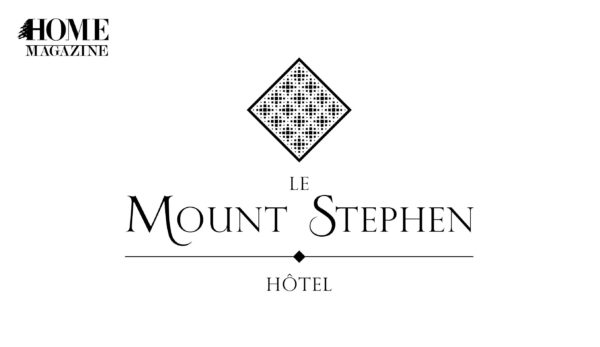“I am the son of the road, my country is a caravan and my life is the most unexpected of voyages. I belong to Earth and to God and it is to them that I will one day soon return.”
Amin Maalouf ’s voyage started here, in a quintessential Lebanese HOME in Ain el Kabou, a village high in the snowy mountains of Metn, Mount Lebanon. In early June, the cherry trees flush crimson. In September, apples. Then the leaves turn fiery and fall. Now only the pine green remains.
The snow that surrounds us and blankets Mount Sannine will make the village streams gush and bubble loudly with fresh water in March. But all is quiet now. December. Even the villages: Ain el Kabou, Kfar Aqab, Wadi el Karam, Boqaatat Kenaan, and Baskinta, where this journey starts.
We are a group of five friends, half awake, fully cold but ready for this: a hike 24 kilometers long, the Baskinta Literary Trail.
This walk is one of the 27 sections of the Lebanon Mountain Trail, a 470-kilometer adventure of a lifetime. The whole journey would take almost a month to make, from the country’s north to its south, as lovers of nature and culture walk and take in the breathtaking sights.
For those who, like us, have only a day or two, the Baskinta Literary Trail is the perfect escape. The path runs along winding streets, forests, orchards, stopping at 22 landmarks. Each relates to a great Lebanese poet or novelist.
At one stop, a writer’s HOME. At another: a verse carved in stone, in memoriam. Further, a statue, then an art studio and center, a favored vantage point or writing spot. Here, at one point or another, lived and wrote such names as Mikhail Naimy, Amin Maalouf, Abdallah Ghanem, Suleiman Kettaneh, Rachid Ayoub, Georges Ghanem and the painter, George Aroyan.
Tourists in khaki shorts and thick hiking boots flock to the area in spring, summer, and early autumn to discover the places that inspired scenes of novels they read, snapshots of views that made them dream.
Sannine, overlooking the sea, “with a front broad, steep and craggy.” To Naimy’s words, Ghanem’s act as a complement: “Upon my heart she tapped…” From Naimy’s house, where a 600-yearold oak he loved still stands, to Maalouf ’s, then the Ain el Kabou spring and village square he immortalized in The Rock of Tanios.
Voices, pens, and brush strokes that defined Lebanese culture and recorded the country’s history come alive on this hike. We discover a meditation garden, a poet’s final resting place, Roman inscriptions and an artist’s workshop. Dozens of paintings are displayed. Also, appropriately, a cave named Sayf el Dawla after a 10th century Arab ruler who encouraged learning and was known to love poetry.
The mountain’s nature still inspires poetry. Its quiet and noble setting, which once drew rulers, missionaries and monks, now attracts writers and pilgrims. They built schools and monasteries, stories and philosophies. We walk from one stop to the next on the map, absorbing, not speaking.
We are shivering but enthralled at the beauty created here. We look around: the sun on the mountain flanks, the smell of frost in the air, the thick trees and silence, and because the sky is clear, far away, the Mediterranean.
The road is ours; the rest of world is huddled indoors for warmth. Those mad enough to also be outside are further up, skiing on the slopes. We loop back to Baskinta, where most of the shutters are closed, but Amo Krikor’s furn is open! A feast of Bonjus and manakish. Well earned.
Most of the members of our happy, tired, crew no longer live in Lebanon. Like many of the writers we came across, life has taken us abroad. We carry some things with us, however: sights, smells, foods, spices, words. Portraits of Lebanon captured in memories of a day like this one.
Well fed, overfed, our heads filled with verse and prose, we are offered coffee in short porcelain cups.
Ma’ hel aw bala hel?
With cardamom, please.
He and his rakwe then pull up a chair.
Now let me tell you a story.
The Baskinta Literary Trail can be hiked independently, or with the Lebanese Mountain Trail Association and other Lebanese NGOs and travel organizations. These groups offer regular guided hikes along this path and other fascinating landscapes of Lebanon. Dates, details, and registration information may be found on their website.
For more info: https://www.lebanontrail.org

































